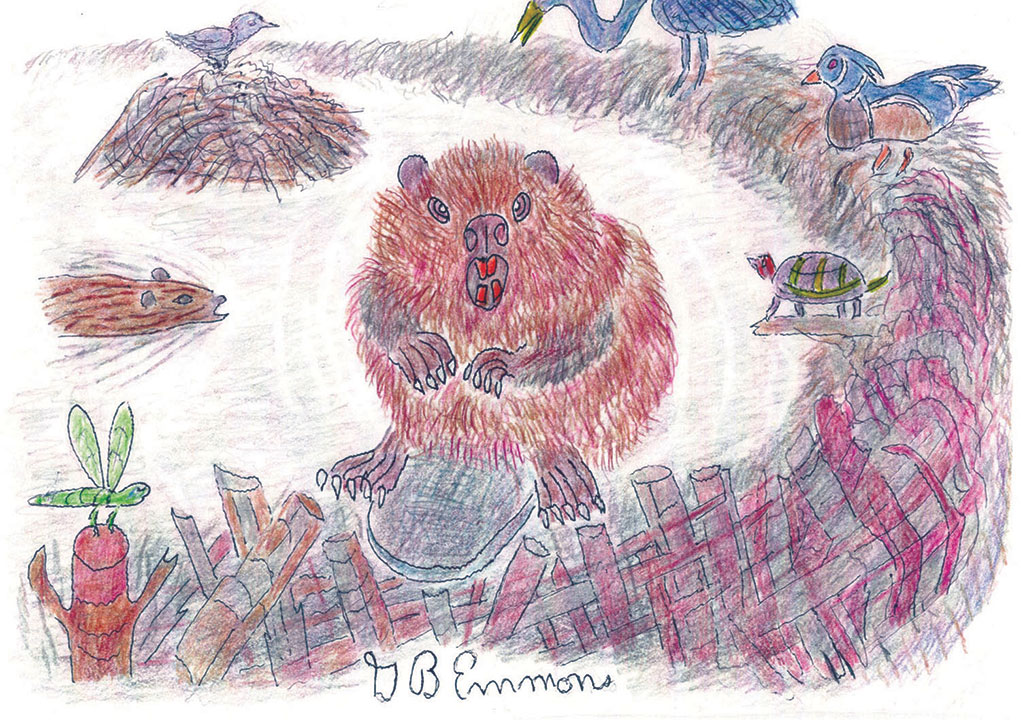Beavers can best be described as Mother Nature’s ecosystem-beneficial engineers, by building dams that benefit both people and wildlife. They work day and night to industriously produce and sustain enriching backwaters of slow-moving ponds and streams for every creature imaginable that breeds life into an otherwise-sterile habitat. They create homes for water-loving birds, mammals, insects, and a variety of warm water fish.
Slow-moving waters also filter out nitrogen and heavy metal sediments that sink to the bottom, preventing them from spreading downstream. Studies of ecohydrology prove that beaver-dam wetlands thrive with islands of widely distributed vegetation during periods of drought and provide wildlife refuge during dry-season wildfires.
No other animal has had greater influence on the habitat of North America than the beaver. Subsequently, Native American tribes called it “the sacred center of creation in the land.”
It was one of the reasons Europeans first colonized the continent for beaver pelts in the late 1600s and 1700s, finding them more valuable than spices originally sought. Subsequently, British and French trappers nearly overhunted, trapped and traded with Indians, almost to extinction. Millions of pelts were shipped to European hat makers for a process called felting, and stretched over frames to dorm top hats. The meat from the tails was salted down in wooden barrels and sent to England to be eaten, while they were classified as fish for tax purposes in customs records. Pelts became so valuable Britain and France fought wars to control the fur trade.
Beavers were once hunted for their castoreum, which was used in perfume and folk medicines, as well as for their meat and pelts.
Legal protection and resupplying efforts worldwide began in the early 20th century, and today because of conservation efforts beavers now number about 15,000,000 in America.
Long ago in mythology of the Delaware and Wyandot, they were thought to possess artistic, cultural, and almost supernatural powers as one of the creators of the natural world. But in modern, rural, and urban environments it is often a considered nuisance for damming and flooding drainage systems and low-lying property as well as basements of houses. Although there is still some trapping for pelts worth several hundred dollars in Buzzards Bay backwaters, to help effected landowners a special permit must be purchased in advance.
There have evolved many non-lethal methods of beaver control with the clash of wildlife renewal and modern living. As the cambial layer between a tree’s bark and inner wood is a mainstay of a beaver’s diet, they have four sharp incisors and 16 other teeth for grinding and chewing for digestion.
Landowners may wrap fencing or metal barriers around tree trunks or apply a compound called thiram that gives off a strong odor to irritate a beaver’s nose. If they clog culverts in ditches, mesh cages at culvert openings, or running a pipe through the dam to control water flow can be costly and difficult. Whenever possible, wildlife managers prefer to assist landowners in relocating beavers to more suitable habitats.
Understanding beavers’ place in the global system and respecting their instinct to engineer and construct dams is necessary if we are to successfully share the world and its water with these inventive creatures.
By George B. Emmons
